
My name is Adam, and I grew up in the city suburbs, where the hum of traffic was a constant backdrop, and streetlights meant the night was never truly dark. But when I was 16, I had my first real taste of the countryside—and it changed everything. I spent a summer in rural Britain, where the nights were so silent I could hear my own breath, and the darkness was absolute, broken only by the glow of endless stars.
During the day, I explored winding cycleways through thick woodlands, the scent of damp earth filling the air as I rode beneath towering trees. I pedaled alongside quiet canals where the water barely rippled, passing fields where sheep grazed lazily in the afternoon sun. It was a world away from the rush of city life, and I never wanted to leave. That summer planted a seed in me—a love for open spaces, self-sufficiency, and the idea of living off the land.
Now, whether you have an acre or ten, designing a homestead is about more than just growing food—it’s about creating a lifestyle. Do you want a rustic retreat tucked into the trees, or a modern homestead with a sleek, organized garden? Should your vegetable garden be a structured series of raised beds or a sprawling, food-rich landscape? No matter what your vision is, these ten ideas will help you design a homestead that’s not just productive, but a place your family can truly call home.
A Cozy 1-Acre Homestead with a Thoughtful Layout
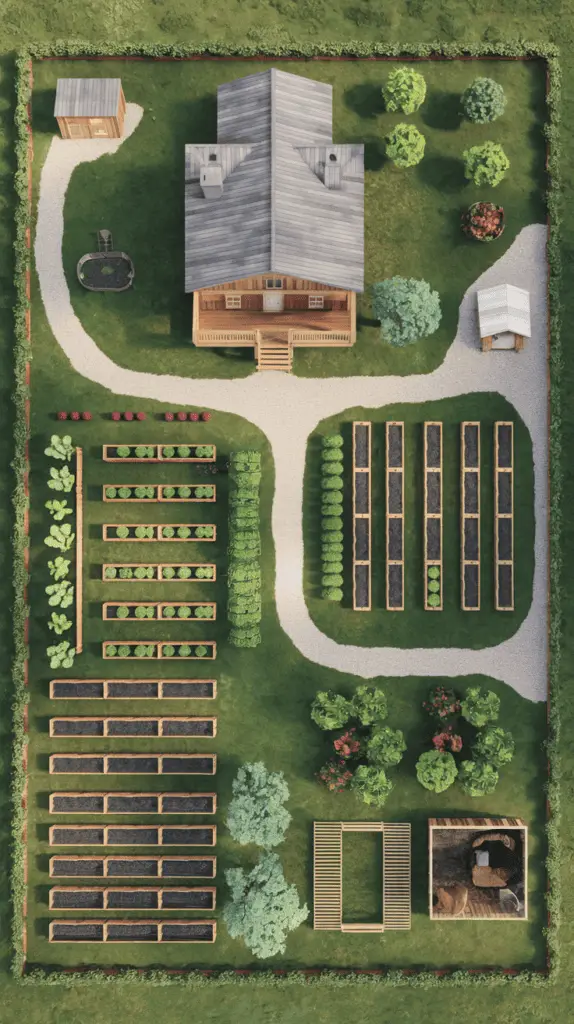
If you think a productive homestead requires endless land, think again. A well-planned 1-acre homestead can provide more than enough space for a thriving vegetable garden, a small orchard, and even a few backyard chickens. The key is smart design.
Start by dividing your space into functional zones: a home vegetable garden near the house for easy access, a chicken coop or small barn in a back corner, and perhaps a tiny greenhouse for year-round growing. Raised beds can maximize your veggie garden, making it easier to maintain and keeping weeds at bay.
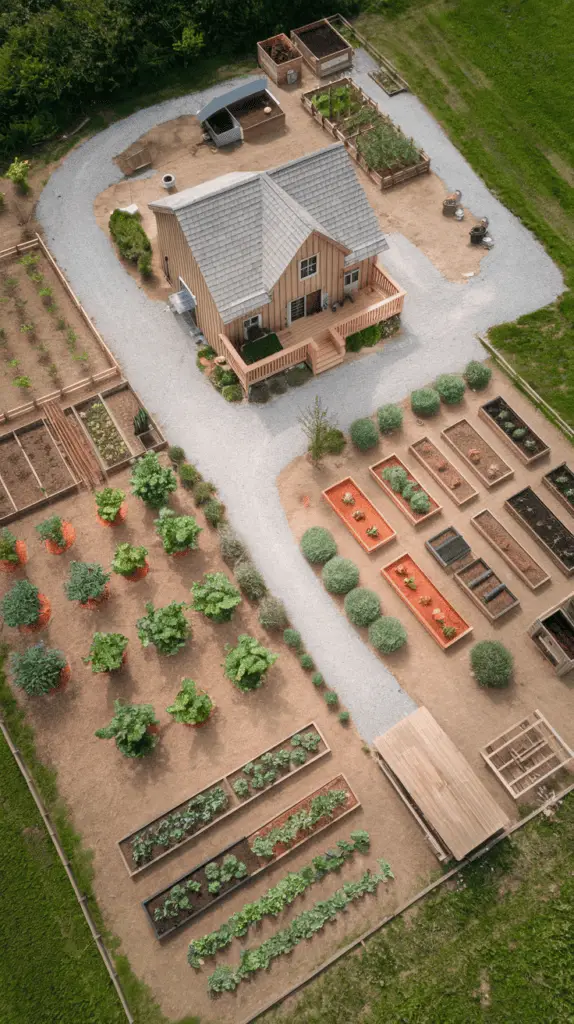
A thoughtful pathway system—gravel or stepping stones—can lead from one section to another, creating a sense of flow. Fruit trees or berry bushes along the perimeter can provide natural shade and an extra layer of food security. Don’t forget a composting station to keep everything sustainable.
This setup works well for families who want a manageable homestead that still produces plenty of fresh food without being overwhelming. It’s proof that you don’t need 10 acres to live the homestead dream.
A Forest Homestead with Winding Garden Paths
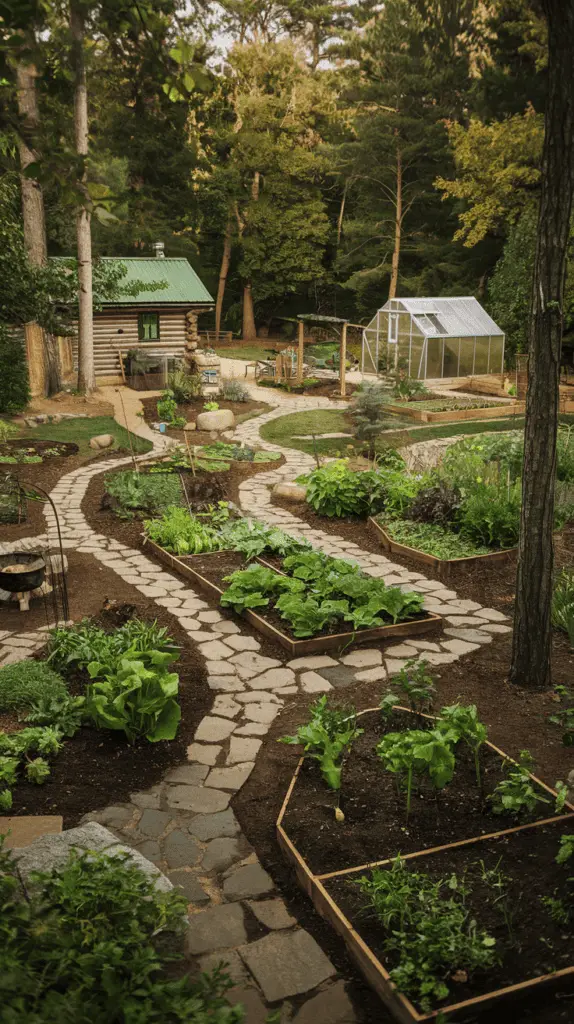
There’s something magical about a homestead nestled within the trees. A forest homestead design takes advantage of a wooded environment, creating a blend of wild beauty and cultivated abundance.
The challenge? Making the most of filtered sunlight and working with the natural landscape. Instead of large open fields, a forest homestead thrives with smaller, strategically placed garden beds. Shade-loving vegetables like lettuce, spinach, and mushrooms do well under tree canopies, while fruit trees can be planted in natural clearings.
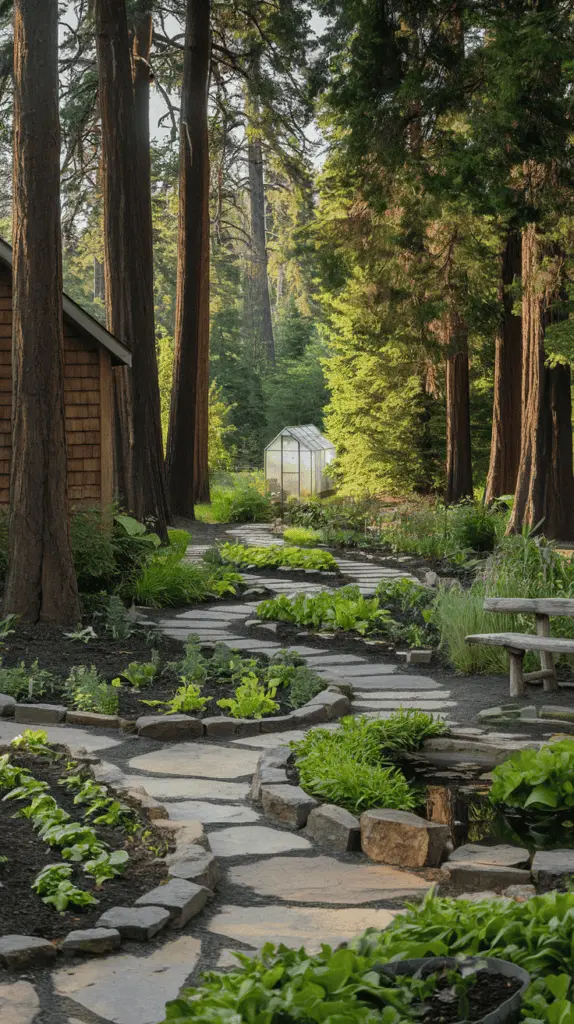
A winding pathway made of wood chips or stone can weave through the property, connecting different sections—perhaps a cozy log cabin, a greenhouse, and a firepit for family gatherings. Raised beds and vertical gardening can help maximize growing space in limited sunlit areas.
This layout is ideal for those who love the idea of a hidden retreat where nature and homesteading blend seamlessly. It encourages a relaxed, organic approach to food gardening while maintaining the charm of a rustic escape.
A Modern Homestead Aesthetic with Clean Lines and Structure
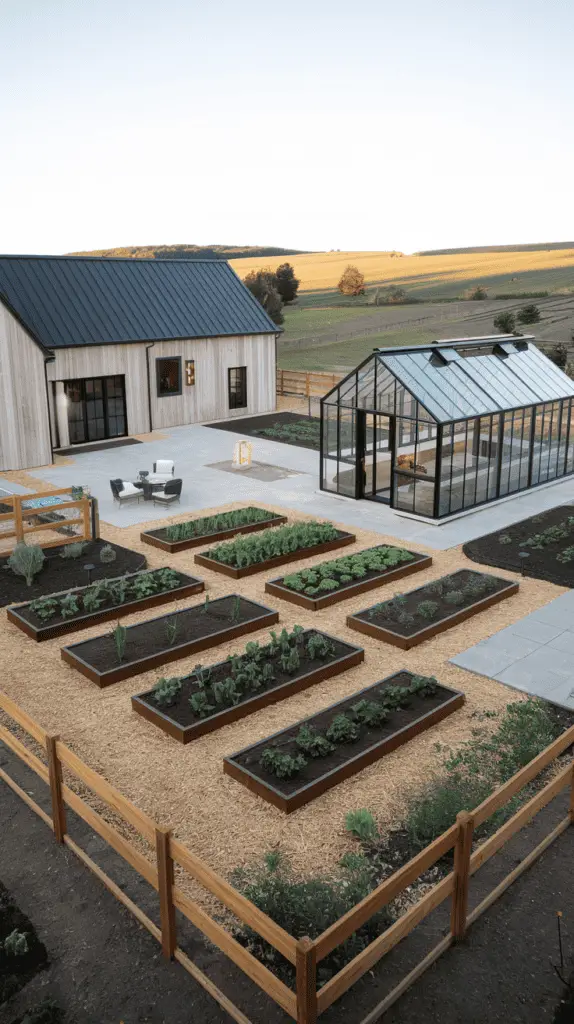
If you love the idea of a homestead but prefer a sleek, contemporary design, a modern homestead aesthetic might be the perfect fit. Think clean lines, organized vegetable beds, and a layout that looks as good as it functions.
This type of homestead often features raised garden beds in neat geometric patterns, making vegetable garden planning easier and more efficient. A stylish greenhouse with glass walls can add a touch of sophistication while extending your growing season.
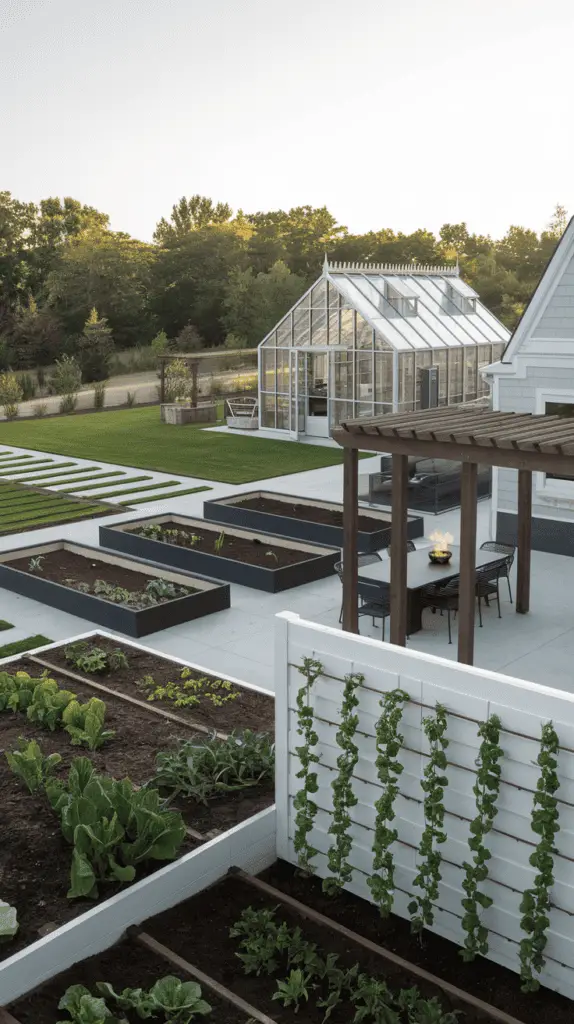
The farm layout can include a mix of open spaces and curated planting areas—perhaps a pergola-covered outdoor dining space next to an herb garden or a decorative fence that doubles as a trellis for climbing vegetables.
Irrigation systems and smart garden technology can make maintenance a breeze, and an outdoor seating area with a fire pit can create a gathering space for the whole family. A modern homestead doesn’t have to lose the warmth of traditional farm life—it simply brings structure and efficiency into the mix.
A Spacious 10-Acre Homestead with a Farm View
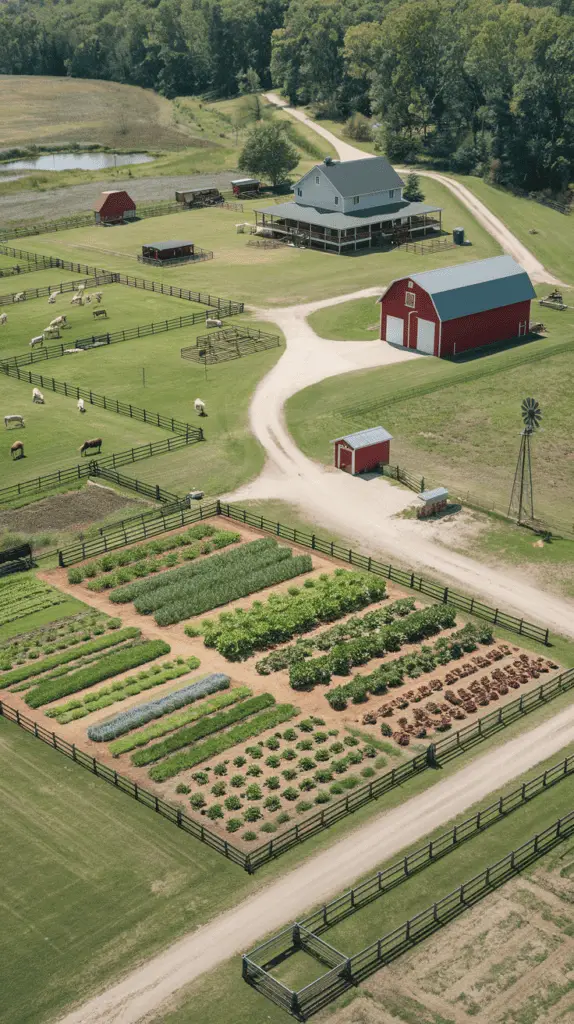
If you have the luxury of space, a 10-acre homestead opens up endless possibilities. This type of farm layout allows for larger crop production, dedicated animal pastures, and even a pond or orchard. The key is to avoid wasted space and create a design that works for both functionality and beauty.
One idea is to divide the land into zones: a home vegetable garden near the house, a large food garden for high-yield crops, an open pasture for livestock, and a wooded garden area for shade and biodiversity. A long, winding driveway lined with trees can add a dramatic entrance, while a farmhouse porch overlooking the land gives you the perfect spot to enjoy the view.
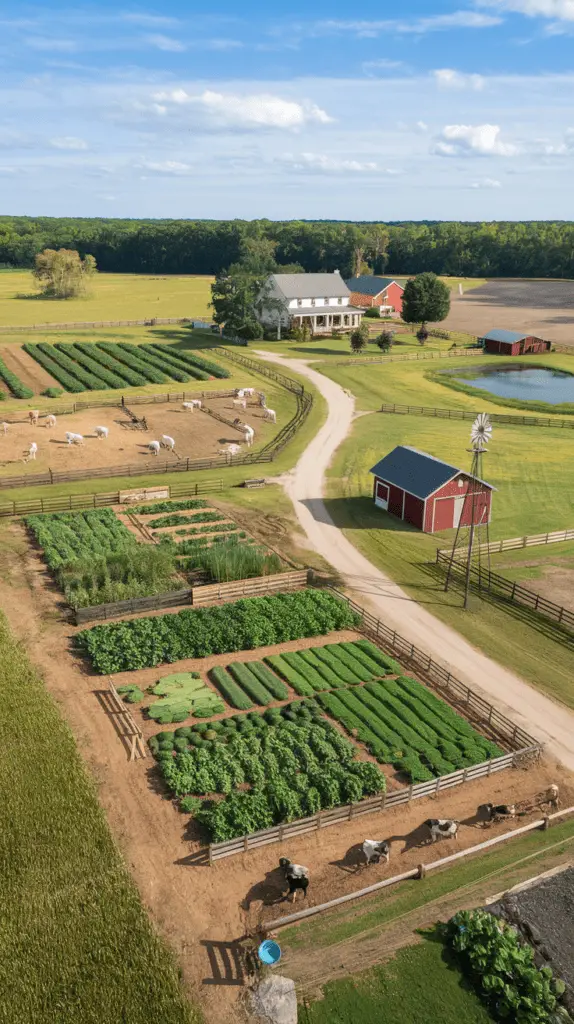
With this much space, you can integrate sustainable living elements like solar panels, a large composting area, and even a rainwater collection system to make your homestead more self-sufficient. This type of layout is perfect for those who want a full-scale farm experience while still maintaining a beautiful and inviting atmosphere.
A Sustainable Living Garden That Feeds the Whole Family
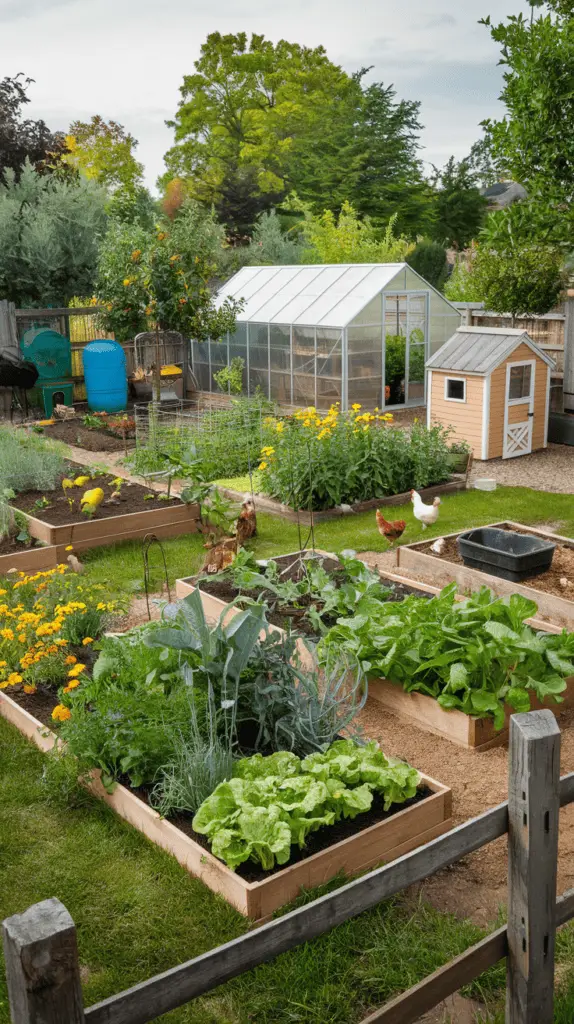
A homestead isn’t just about growing food—it’s about creating a self-sustaining system that supports your family’s needs year-round. A sustainable living garden focuses on long-term productivity with smart vegetable garden design choices that make the most of every square foot.
A combination of raised beds, companion planting, and permaculture techniques can increase yields while reducing the need for chemicals. A mix of perennial crops (like asparagus, rhubarb, and berry bushes) alongside seasonal vegetables ensures a steady food supply.
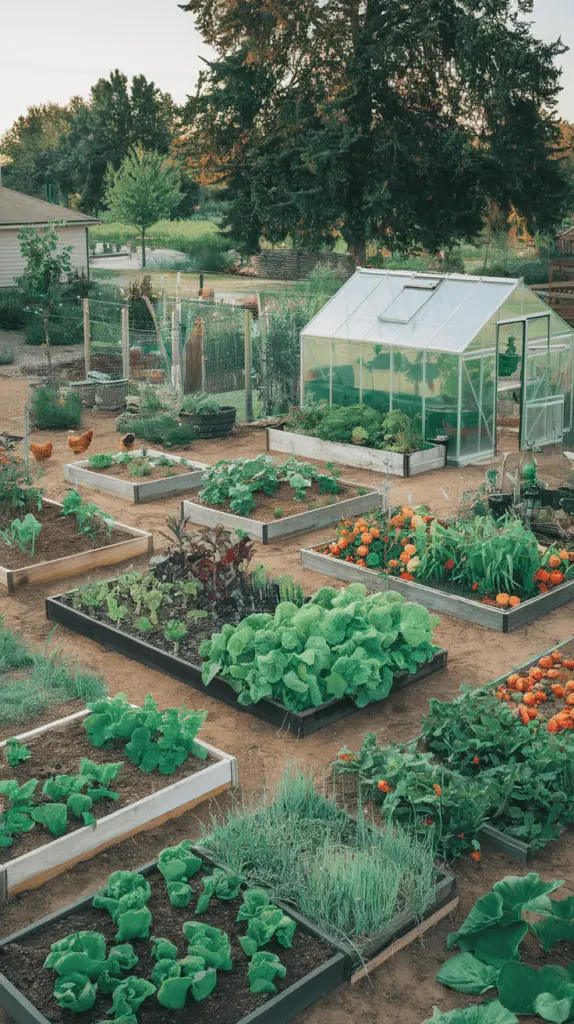
Water conservation is a key part of this design. A well-placed rainwater collection system can provide irrigation, while mulching techniques help retain soil moisture. A small greenhouse or cold frame can extend the growing season, allowing fresh produce even in colder months.
Integrating livestock—like chickens for eggs or goats for milk—can make this type of homestead even more self-sufficient. The idea is to create a balanced ecosystem where everything supports everything else, reducing waste and maximizing productivity. It’s the perfect setup for families who want to live more sustainably without sacrificing comfort and beauty.
A Farmhouse Garden Layout with Classic Charm
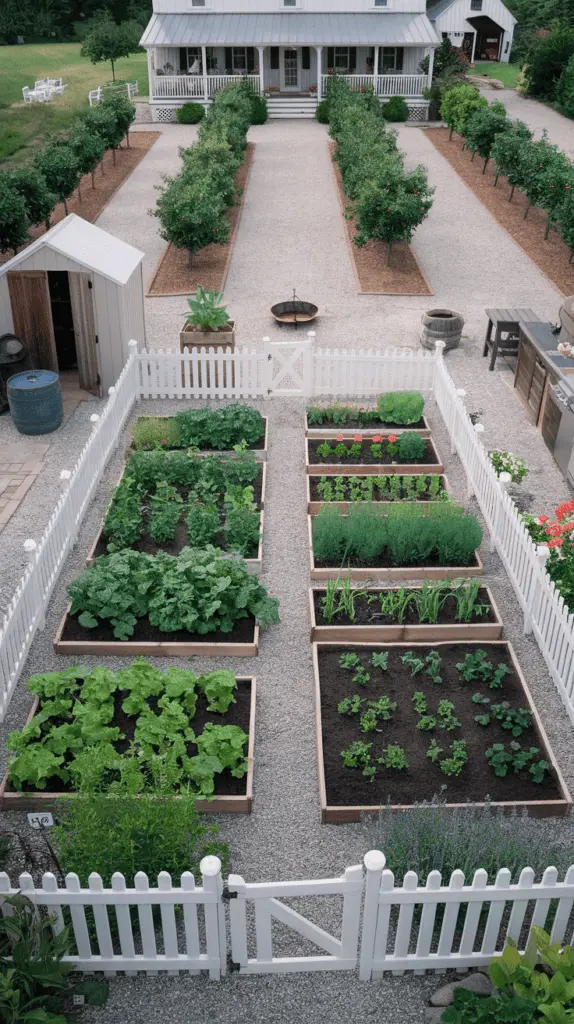
There’s something timeless about a farmhouse-style homestead. The combination of open fields, a charming farmhouse, and a carefully designed vegetable garden creates an inviting, functional space that feels straight out of a storybook.
In this layout, the vegetable garden becomes the heart of the homestead. A series of raised garden beds, bordered by gravel or brick pathways, make it easy to navigate while adding rustic charm. Traditional crops like tomatoes, beans, and corn can be planted in rows, while herb gardens and flower borders add beauty and attract pollinators.
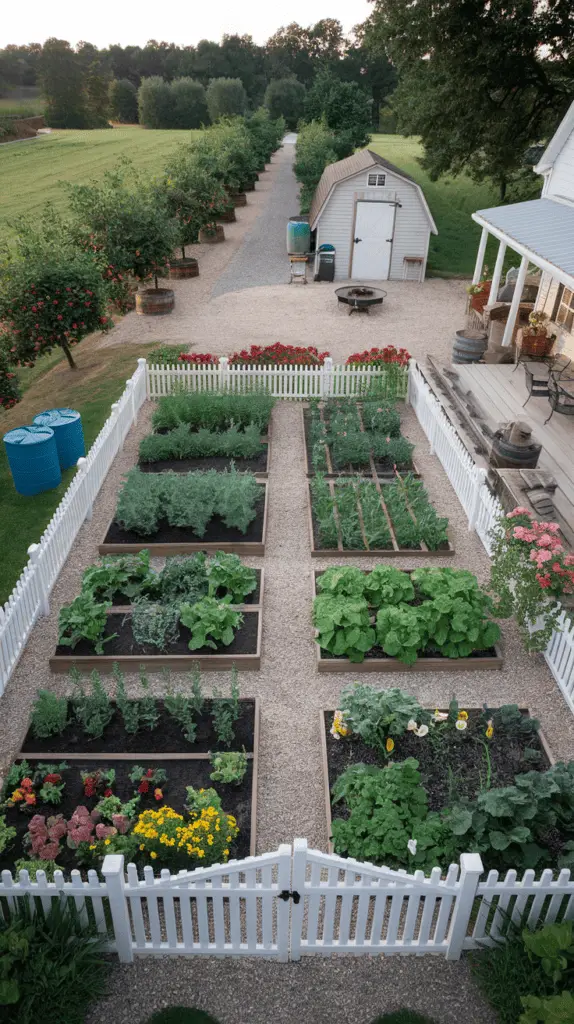
A classic white picket fence or a wooden split-rail fence can enclose the garden, keeping out wandering animals while enhancing the aesthetic. Nearby, a small barn or shed provides storage for tools, while a rain barrel system ensures efficient water use.
For an extra touch of charm, a farmhouse garden layout often includes fruit trees lining a gravel driveway, a cozy front porch for enjoying evening sunsets, and a fire pit or outdoor kitchen for family gatherings. This design blends productivity with the warmth and character of traditional farm life.
A Wooded Garden Retreat for a Serene Escape
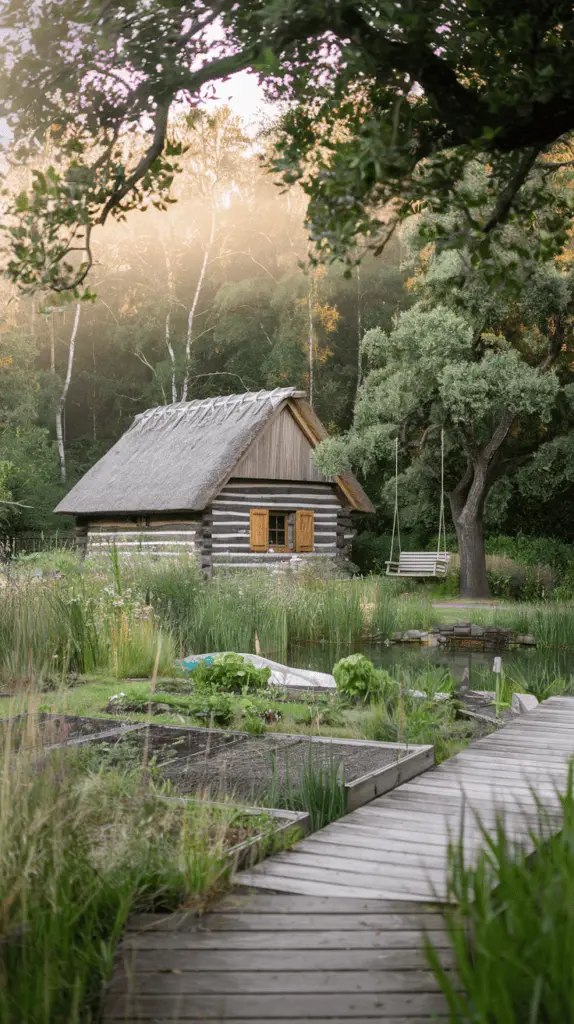
For those who want a homestead that feels like a peaceful hideaway, a wooded garden design offers the perfect balance between nature and cultivation. This type of homestead layout takes advantage of the natural landscape, incorporating lush greenery and quiet nooks for relaxation.
Instead of a large open field, the vegetable garden is woven into the wooded surroundings. Shade-loving crops like kale, chard, and herbs thrive under the trees, while small clearings provide space for sun-loving vegetables.
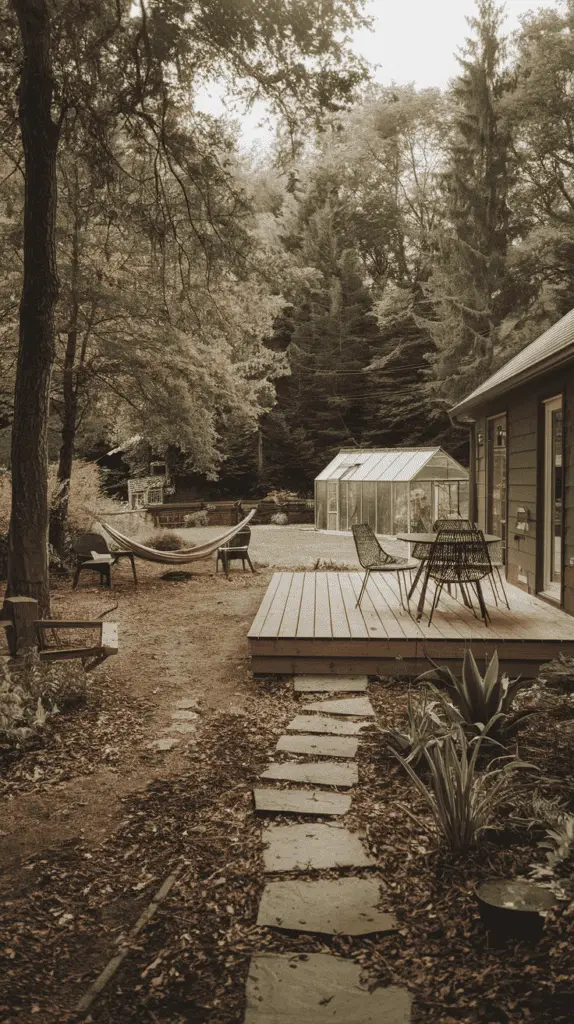
Winding stone pathways lead from the house to various garden spots, creating a sense of discovery. A small greenhouse or cold frame can be nestled among the trees for extending the growing season, and a secluded seating area—perhaps with a wooden swing or hammock—adds to the retreat-like feel.
A natural pond or rain garden can enhance biodiversity while serving as a water source. This type of homestead is ideal for those who want a relaxed, organic approach to gardening while preserving the beauty of their wooded surroundings.
A Small Homestead with a Vertical Veggie Garden
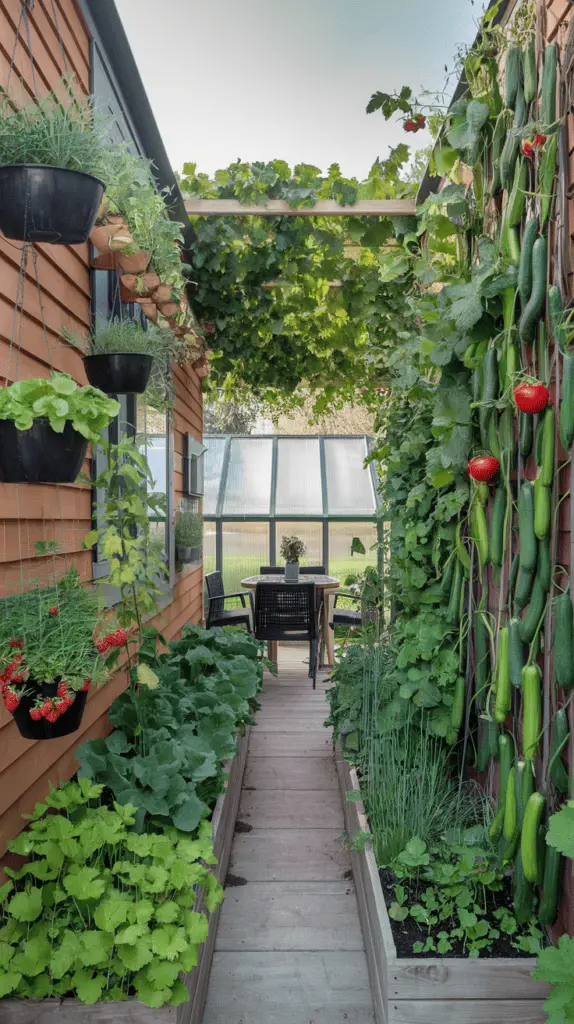
Not everyone has acres of land to work with, but that doesn’t mean you can’t have a thriving vegetable garden. A vertical veggie garden is a fantastic way to maximize space, whether you’re on a half-acre homestead or even a suburban lot.
The idea is to grow up instead of out. Trellises, hanging planters, and stacked garden beds allow for an abundance of produce in a small footprint. Tomatoes, cucumbers, peas, and even squash can be trained to grow vertically, freeing up ground space for root vegetables and herbs.
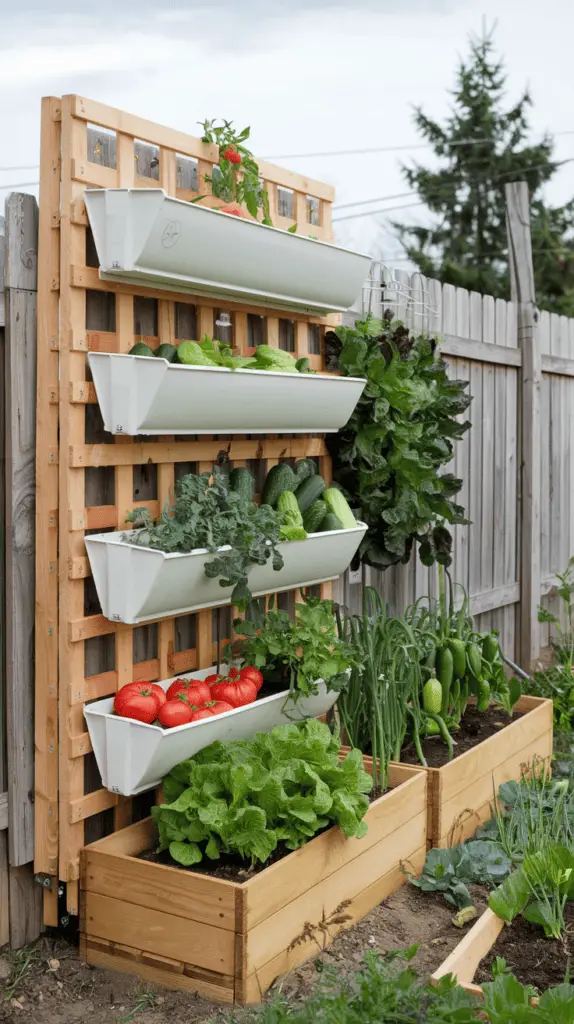
This design works particularly well in a modern homestead aesthetic, where clean lines and space efficiency are key. A small patio or courtyard can be transformed into a lush food garden with the right arrangement of containers, wall-mounted planters, and climbing frames.
For families with kids, a vertical garden can double as an educational space—imagine a living wall where children can pick strawberries or cherry tomatoes right at eye level. This setup proves that even the smallest homestead can be bursting with fresh, homegrown food.
A Farmstead with a Stunning View
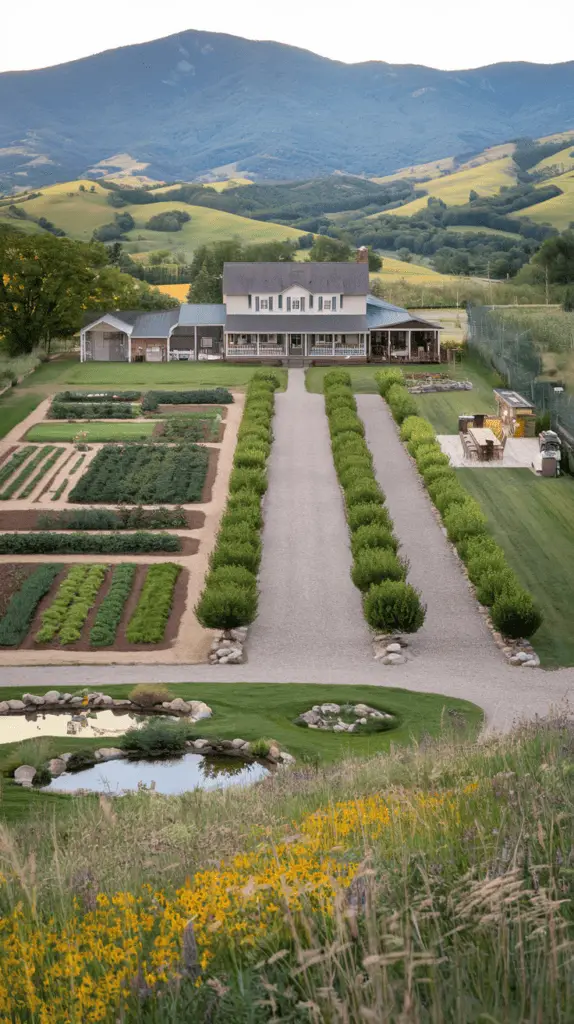
Some homesteads are as much about the scenery as they are about self-sufficiency. If you’re lucky enough to have land with rolling hills, a mountain backdrop, or a lake view, designing your homestead to highlight the landscape can turn your farm into a dreamlike retreat.
A well-thought-out farm view homestead integrates the garden, home, and outdoor spaces in a way that frames the best natural features. The vegetable garden might be laid out in a terraced design, cascading down a gentle slope for both practicality and aesthetics.
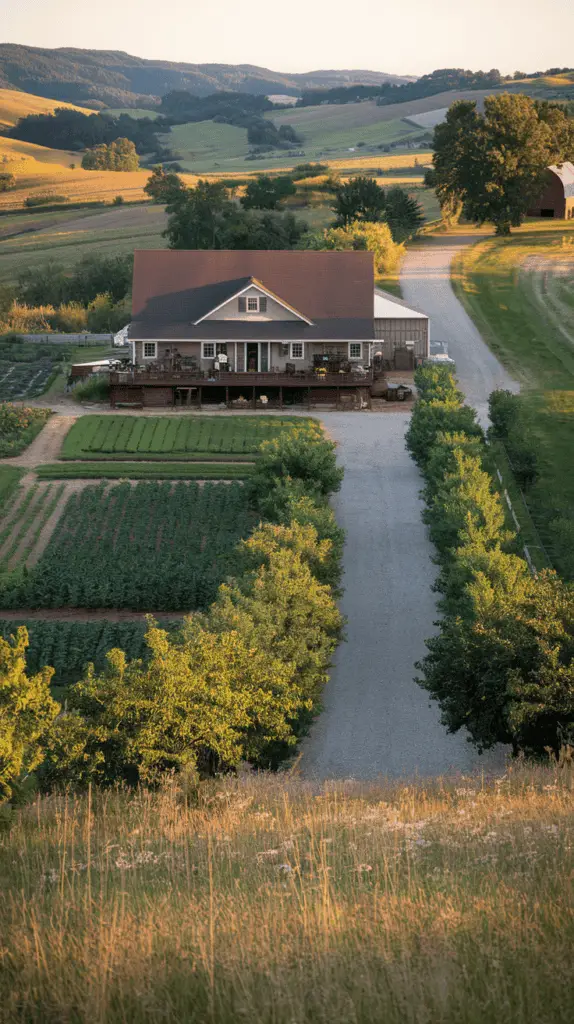
A long gravel driveway lined with fruit trees or wildflowers can lead up to the main house, where a wide front porch provides the perfect spot to take in the view. An outdoor kitchen or dining area positioned to face the best scenery makes mealtime an experience in itself.
For an extra touch of charm, incorporating elements like a wildflower meadow, a decorative pond, or a vineyard can enhance the natural beauty while still being productive. This homestead design is perfect for those who want a farm that feels as visually stunning as it is functional.
A Homestead Garden in Full Bloom at Sunset

There’s something magical about a homestead garden bathed in the warm glow of the setting sun. As the evening light stretches across the land, golden hues reflect off leafy greens, ripe tomatoes, and vibrant flowers swaying in the breeze. A well-planned garden isn’t just about productivity—it’s about creating a space that’s beautiful, calming, and deeply connected to nature.
The key to a thriving homestead garden that looks stunning at sunset is layered planting and seasonal variety. Mixing vegetables, flowers, and fruit trees ensures a landscape that’s both productive and visually appealing. Tall sunflowers, swaying corn stalks, and fruit-bearing trees create a vertical element, while lower layers of herbs and leafy greens fill out the space. Companion planting—like marigolds nestled between tomatoes or lavender lining the pathways—adds color while naturally repelling pests.

A winding pathway through the garden, whether made of stepping stones, gravel, or wood chips, encourages exploration. Raised garden beds can create structure, while climbing vines on trellises add height and texture. In one corner, a rustic wooden bench or a simple swing hanging from a sturdy tree branch provides a peaceful place to sit and take it all in.
To make the most of golden hour, consider planting warm-toned flowers and crops that reflect the sunlight beautifully. Peach and apricot trees, deep red peppers, and golden squash all catch the light in stunning ways. A small pond or reflective surface, like a water barrel or a polished stone path, can amplify the warm glow of the evening sun.
A well-designed homestead garden isn’t just about food—it’s about creating a space where your family can unwind, connect with nature, and enjoy the beauty of each season. And there’s no better time to appreciate it than at sunset, when the world slows down and your garden feels like the most peaceful place on earth.
Final Thoughts
Building the perfect family homestead isn’t about size—it’s about thoughtful design, sustainability, and creating a space that fits your lifestyle. Whether you’re working with a cozy 1-acre layout, a forest homestead, or a sprawling 10-acre farm, the key is to blend functionality with beauty.
A well-planned vegetable garden doesn’t just provide fresh food—it becomes the heart of your homestead, a place where family memories are made, and the connection to nature deepens. From modern homestead aesthetics to rustic wooded retreats, there’s no one-size-fits-all approach. It’s about crafting a space that feels like home.
No matter where you are in your homesteading journey, the right layout and design choices can turn your vision into reality. So start planning, get your hands in the dirt, and watch as your dream homestead grows into something truly special.
